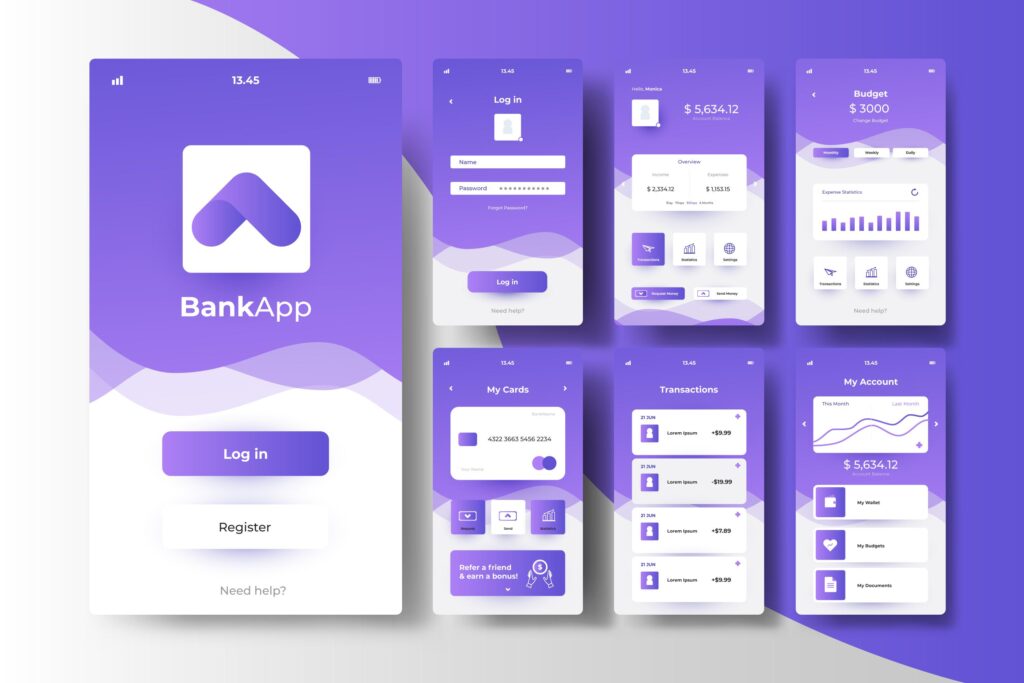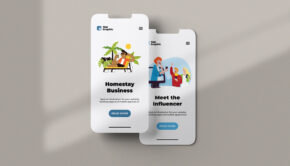UI/UX challenges in building a financial app
User interface and user experience are essential elements for building a successful peer-to-peer financial platform. The user experience simply activates positive emotions in the user while interacting with the financial service or a product. The main goal of UI/UX is that the user would like to experience the interaction again or share their experience with others. Research suggests that 94% of first impressions online are affiliated with the design of an app.
A financial app might perform well based on a well-framed app development strategy. But that’s only half the battle. Your app needs an elegant yet functional user interface as well as user experience, for it to shine. Here are the few design challenges and elements that make your app stand out in the financial market.
Lack of UX accessibility
When focusing on the design of a finance app, it’s crucial not to underestimate the importance of web accessibility. Users face a lot of different challenges and seek varied solutions. In order to offer the same features to everyone, you’ll need to address each and every user’s needs.
More than 80% of people with impairments have decided not to trust a financial app because of a lack of UX accessibility and other barriers in the design. Thus, accessibility improvements will not only improve your conversion rates but also attract new customers.
Insufficient user research
Of the thousands of financial apps on the app stores, some have been successful and loved by the users but most of them experience a drop in interest and aren’t successful. According to statistics, approximately 70% of financial apps fail due to insufficient user research. With just gaining valuable user insights and sufficient market research, you can provide a better solution for your customers.
The importance of user research and its impact on the overall UX design quality and business performance is huge. An essential part of the UI/UX design process is also post-launch research. It helps you to evaluate the success of your app and collect insights for further improvements and adjustments.
Questionable UI’s
UI elements must be taken into account as it is correlated to the usability of your finance application. If the UI of your financial application development is questionable, it could take longer for the app to load. You must not ignore specific components for financial pp development. Here are the primary components you’ll need to focus on while developing financial applications.
Subtle design
When it comes to designing a financial app, aim at keeping the user interface as subtle as possible. Minimalism is the most attested practice when it comes to financial app development. Your app design doesn’t need to be super basic, just make sure you are not going over the top with the complexity of your financial app.
Users are going to be viewing and using the app on a small screen, so the simpler the design the easier it is to navigate for the users. The best part about subtle designs is that it keeps the users focused. If there are too many bells and whistles to confuse them, it’ll impact the UX negatively. Moreover, the UI/UX principles such as visual hierarchy, font colors and prototypes play a vital role in the simplicity of an app.
Consistency
Consistency is the key to creating reinforcement and giving users a sense of association with the app and its features. Moreover, it’s all about being harmonious with iterations. Make sure all the elements in the user interface are uniform and they look as well as behave the same way. This helps in creating a sense of affinity, control and readability. It proves that a users’ assumptions about the user interface are right.
If the colors, designs and sizes of buttons keep differing from one page to another, it might confuse the user. For instance, if you are designing the home screen of your financial app, it must be consistent in terms of color as well as style. If the subscribe button is of a certain color and size, the same style and color should be consistent across other pages.
Visual Cues
Visual cues are an integral part of UI/UX design. It plays an essential role in your conversion goals as it helps visitors navigate through your page and maintain a visual hierarchy. Visual cues influence the user and act as a reminder if the user gets confused.
Don’t try to squeeze all features into a small space. Instead, make space open and the navigation as easy as possible for the users. A user-friendly design simply means that the user won’t have to do much zooming or scrolling while using the app.
Heatmaps
Heatmap is a data visualization technique that shows how website users move, scroll and click on the page. You can collect this UX data for your financial app and spot optimization opportunities. It can lay out where exactly the average fold is on desktop and mobile, so you can spot significant information and CTAs (Call to Action) where they get noticed the most.
If a picture is worth a thousand words, then it can be said that a heat map is worth a thousand insights. Heatmaps will accumulate enough data from enough users to neglect anomalies and sight frequent click patterns across your targeted audience.
Onboarding optimization
The financial app development market is an extremely competitive market. The primary goal of app onboarding optimization is to escort users along the process of using an app. Introducing users with an intelligible overview of how many steps it takes to complete a task diminishes user abandonment.
Onboarding optimization in financial app development also plays a fundamental role in converting potential users into long-term users. You can use one-click social signups, making it extremely easy for users to sign up for your app. In addition to added speed, the user doesn’t have to fill out any of their personal information.
Dashboard configuration
A dashboard is a visual display of all the necessary data and information needed to accomplish one or more objectives. Having the right approach to dashboard configuration is often challenging. The main purpose of a dashboard configuration is to make complex information understandable and convenient.
Dashboard configuration design decisions should be manifested keeping in mind the needs of users, project goals as well as the nature of the data. The information architecture must present the essential information first while allowing access to secondary metrics.
Secure systems
When it comes to financial apps, security is one of the most dominant challenges. The user must feel secure as security is not a trend but a pivotal aspect of UI/UX. An exemplary financial application interface is feasible to operate and defend against attempts to steal users’ private information. Typically, developing such secure systems is critical in ensuring that both user and technical demands are met.
Biometric identification is becoming more and more admired among finance apps. Along with that, it is now contemplated to be the new frontier of secure systems. Some other aspects of secure systems include integrating encryption, authentication and removing unnecessary security obstacles by enhancing user privacy as well as data privacy. It allows users to authenticate effortlessly and quickly.

Image by Freepik
How to master Fintech UX?
Fintech applications are gaining more and more attention every day while many banks are losing their customers. Traditional banks have had an authoritative position in the market for quite some years, but now with the powerful UI/UX, the entire financial market is shifting. The Fintech revolution has brought a lot of metamorphosis such as effective management tools, faster loans, better crowdfunds, peer-to-peer lending and secure digital payments.
Resolve the issues faced by users
Most financial app-owning companies don’t track the customer journey which is extremely important to resolve the issues faced by the users. Solving these issues helps you to adapt to various customer behaviors that keep on changing.
During the financial app development process, implement strategies that are user-centric and ensure the user experience remains free of obstacles and as smooth as possible. It aids in transforming your users into loyal brand customers.
Think from the client’s perspective
Not just financial apps, but every mobile app is expected to be human-oriented. When creating a design, you will have to think from the client’s perspective and keep the user in mind. Try to envision like the user and acknowledge what spots in the user experience can trigger some questions and struggles.
Each and every decision made in the design of a financial app needs to revolve around the needs and motivation of the users. When developing a fintech app, it is vital to tailor the app to meet the requirements of a particular set of users instead of a generic group. You need to understand why a particular customer will actually use the service or buy the product.
Make the app visually appealing
Along with resolving the issues faced by the users, the app should bring something creative into the user experience. It should be unique to be competitive in the market and stand out in the app store. Adding desirable features such as gesture-driven design, in-app illustrations and animations can help make your app visually appealing.
All of the design aspects of your fintech app need to have a motive, including the color aspects. Don’t make the colors either too contrasting, too glooming or the fonts difficult in terms of readability. You don’t want to harm someone’s eyes if the colors are too vivid. Additionally, you might want to use common color associations for your buttons for a better appearance.
Takeaways for better UI/UX
Designing a financial app isn’t easy. Whether you’re designing your own app or hiring a designer, it is paramount to keep all the above-mentioned UI/UX challenges and practices crystal clear in mind. Last but not the least, the majority of successful financial apps have subtle and similar designs. Don’t design an application that’s going to have a puzzling learning curve for your users. After all, the success rate of a financial app depends solely on the user experience.








![A Visual Lesson on Eight Business Models [Infographic]](https://technofaq.org/wp-content/uploads/2017/05/One-Cow-Describes-Eight-Business-Models-150x150.png)







